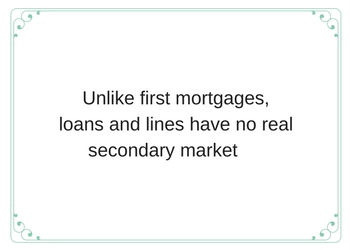 To round out your basic understanding of home equity loans and home equity lines of credit (HELOC) arrangements, discover how much you can borrow.
To round out your basic understanding of home equity loans and home equity lines of credit (HELOC) arrangements, discover how much you can borrow.
How much money you can borrow "on the house" depends on a number of factors -- including the area of the country in which your home is located. Seem strange? It's not, really. Lenders adjust their policies to take into account your:
- Debt load
- Income
- Credit rating/score
Other considerations include the local economy's health and each lender's own desired exposure to risk.
You may be familiar with income, debt load, and credit rating factors, since the process of obtaining your home equity loan or line is similar (though less rigorous) to getting your first mortgage. Lenders will generally require that you have a good-to-excellent credit score (typically above FICO 680) to qualify for the lowest rates, and a low debt load and a strong income will allow to borrow the maximum amount of your equity, too.
You should also be aware of the lender's risk factor as it applies to pricing home equity lines and loans. Pricing is the process lenders use to determine what interest rates to charge on loans they offer. Unlike first mortgages, loans and lines have no real secondary market; that is, they're not normally sold to investors, and lenders have to hold them in what's called a portfolio of loans. Many lenders, particularly the more conservative ones, offer loans with lower Combined Loan to Value (CLTV) ratios, also known as Total Loan-to-Value (TLTV) ratio. The CLTV is the maximum percentage of your available equity against which the lender will allow you to borrow.
 Estimating your available home equity
Estimating your available home equity
Lenders use formulas to determine how much equity is available in your home. Most require a current property appraisal. Depending upon where you live, this can either be a 'drive-by' appraisal (using an Automated Valuation Model) or a full appraisal; the difference is the level of detail the lender requires. Once the lender has established the property's value, they multiply it by a percentage factor, subtract the amount still remaining on your first mortgage and arrive at the maximum borrowing amount. A typical equation would look something like this:
| Appraised | Percentage | Potential | First | Maximum | ||||
| value | times | factor | equals | equity | minus | mortgage | equals | line or loan |
| $100,000 | x | 0.80 | = | $80,000 | - | $60,000 | = | $20,000 |
The percentage factor that determines how much you can borrow is largely dependent upon where in the country you live. For example, in areas where the economy is particularly weak, or where housing prices have declined or continue to fall, typical percentage factors may be 65% to 70% of total equity, as lenders attempt to limit their risks by keeping loan amounts comparably low. In stronger areas, 80% of the total equity is most common, and in areas with normal economic health, 75% is typical.
 That's not to say you can't find a 90% CLTV loan in weak areas, or a 65% CTV loan in stronger ones; again, these percentages also depend upon the health of the lender and their loan portfolio needs. Competitive shopping, and knowing what to ask for and how to ask for it, can help you find the CLTV you need in the area in which you live. We'll talk about shopping for home equity loans and HELOCs in the last section of this guide.
That's not to say you can't find a 90% CLTV loan in weak areas, or a 65% CTV loan in stronger ones; again, these percentages also depend upon the health of the lender and their loan portfolio needs. Competitive shopping, and knowing what to ask for and how to ask for it, can help you find the CLTV you need in the area in which you live. We'll talk about shopping for home equity loans and HELOCs in the last section of this guide.
Calculating Home Equity: KnowEquitySM Tracker
Once the lender has determined your maximum available loan or line amount, they'll normally apply debt to income ratios, just as they qualified you for your first mortgage. This is a measure of how much money you earn versus how much you owe, and is intended to keep you from overextending yourself. Qualification ratios vary widely from lender to lender; lenders with more conservative underwriting standards will use lower DTI ratios; others may allow a DTI of 43% or perhaps even higher. When talking to lenders, so be sure to ask about their DTI ratio, as this may affect the amount of money you can borrow.
Section I of HSH.com's home equity loan and line of credit guide has explained what home equity is, how to use it and how to estimate the amount that you can borrow. Section II outlines home equity borrowing options in detail.
Next article: Accessing home equity
Previous article: Using home equity



